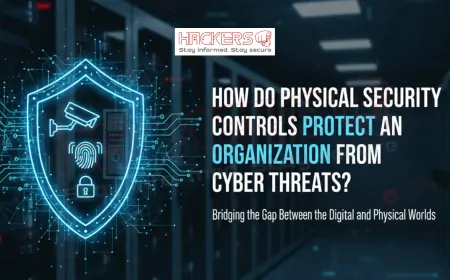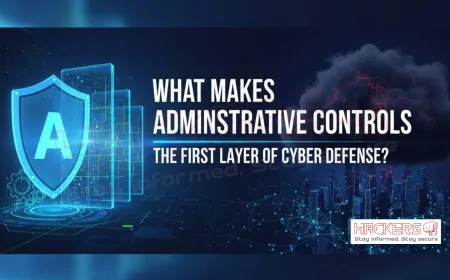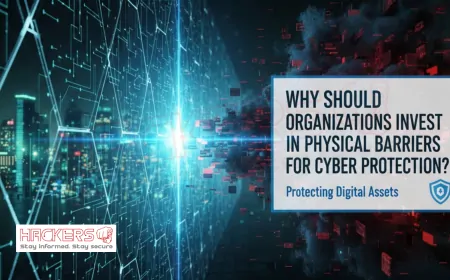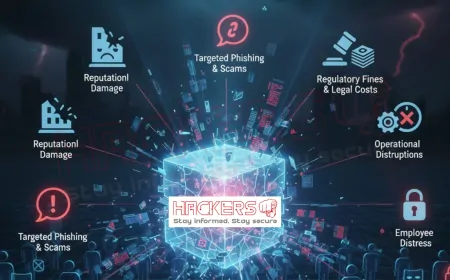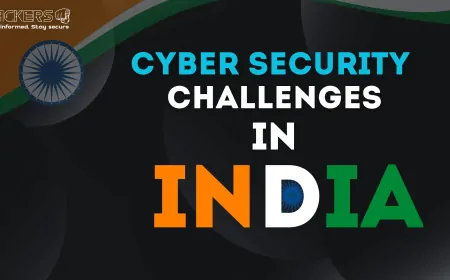What Makes Oil and Gas a High-Risk Target for Cyber Nations?
Deep beneath the earth, under oceans, or in the deserts of the Middle East, black gold flows. It powers cars, heats homes, and fuels economies. But in 2022, a silent attack struck at the heart of India’s energy sector. Oil India Limited (OIL), a state-run giant, woke up to find its IT systems locked. A ransom note demanded $7.5 million. Files were encrypted. Operations slowed. This was not a one-off. In 2021, the Colonial Pipeline in the U.S. was hit by ransomware, causing fuel shortages across the East Coast. In 2023, a cyberattack on a major Saudi refinery forced emergency shutdowns. These are not random hacks. They are calculated strikes by cyber nations: state-sponsored hackers or criminal groups backed by governments. Why target oil and gas? Because one breach can disrupt global supply chains, spike fuel prices, and even destabilize nations. In this blog post, we will explore why the oil and gas industry is a top target for cyber nations. We will break down the motives, methods, and massive consequences. Most importantly, we will show how the industry is fighting back. Because when hackers target energy, they are not just after money. They are playing a dangerous game of power, profit, and geopolitics.

Table of Contents
- Why Oil and Gas Is Critical National Infrastructure
- Who Are Cyber Nations and What Do They Want?
- The Motives: Geopolitics, Profit, and Disruption
- Entry Points: Where Hackers Get In
- Real-World Cyber Nation Attacks on Oil and Gas
- Operational Technology (OT): The Hidden Risk
- Supply Chain and Third-Party Vulnerabilities
- IoT and Digital Oilfields: New Attack Surfaces
- The Consequences: Beyond Financial Loss
- Why India’s Oil and Gas Sector Is Especially Vulnerable
- How the Industry Is Defending Against Cyber Nations
- Global and Indian Response to the Threat
- Cyber Nation Threat Matrix in Oil and Gas
- Conclusion
Why Oil and Gas Is Critical National Infrastructure
Oil and gas are not just commodities. They are the lifeblood of modern civilization. They power:
- Transportation: cars, planes, ships
- Electricity: 40 percent of India’s power from oil and gas
- Industry: fertilizers, plastics, chemicals
- Defense: fuel for tanks, jets, and warships
- Agriculture: tractors, irrigation pumps
In India, oil and gas contribute 35 percent to primary energy. ONGC, OIL, and Reliance produce 70 percent of domestic crude. A single day of disruption can:
- Cause fuel shortages at 80,000+ petrol pumps
- Spike inflation by 1 to 2 percent
- Delay military logistics
- Halt fertilizer plants, threatening food security
Governments classify oil and gas as Critical Information Infrastructure (CII). A cyberattack is not just a business risk. It is a national emergency.
Who Are Cyber Nations and What Do They Want?
Cyber nations are state-sponsored hacking groups or criminal syndicates with government ties. They include:
- Russia: GRU, Fancy Bear, Conti ransomware group
- China: APT41, Winnti, linked to PLA
- Iran: APT33, Charming Kitten
- North Korea: Lazarus Group, known for bank heists and ransomware
Their goals vary:
- Espionage: Steal drilling tech, reserves data
- Sabotage: Shut down refineries during conflicts
- Profit: Ransom payments fund state operations
- Geopolitical Leverage: Threaten energy supply to pressure governments
Unlike regular hackers, cyber nations have unlimited resources, patience, and legal immunity in their home countries.
The Motives: Geopolitics, Profit, and Disruption
Oil and gas offer a perfect storm of motives:
- Economic Impact: One day of U.S. fuel chaos = $1 billion loss
- Geopolitical Power: Control energy, control the world
- Intellectual Property: Seismic data worth billions
- Psychological Warfare: Fuel shortages create public panic
- Low Risk: Hack from abroad, no physical danger
In 2022, Russia allegedly targeted European gas pipelines amid Ukraine tensions. The payoff? Global influence with a few lines of code.
Entry Points: Where Hackers Get In
Oil and gas systems are full of digital doors:
- Phishing: Fake “safety alert” email to rig workers
- Unpatched OT: Old SCADA systems in refineries
- Remote Access: VPNs with weak passwords
- Supply Chain: Hacked vendor like a drilling software firm
- IoT Devices: Smart sensors on pipelines
- Insider Threats: Bribed employee or contractor
Once inside, hackers “pivot” from office IT to operational systems controlling valves and pumps.
Real-World Cyber Nation Attacks on Oil and Gas
These attacks show the threat is real:
- Colonial Pipeline (2021): DarkSide (Russian-linked) ransomware; $4.4 million paid
- Oil India (2022): Russian malware from Nigeria; $7.5 million demand
- Saudi Aramco (2012): Shamoon virus wiped 30,000 computers; Iran suspected
- Norway’s Hydro (2019): LockerGoga ransomware; state links unclear
- Iranian Refinery (2023): Cyberattack forced manual operations; Israel blamed
Many attacks go unreported. U.S. CISA says 60 percent of energy firms faced state-sponsored probes in 2024.
Operational Technology (OT): The Hidden Risk
OT refers to systems controlling physical processes:
- SCADA: monitors pipelines and refineries
- PLC: controls valves and pumps
- DCS: manages chemical processes
OT was air-gapped (isolated) in the past. Now, it connects to IT for efficiency. A breach can:
- Overpressure pipelines, causing explosions
- Shut down refineries remotely
- Contaminate fuel with wrong chemical mixes
In 2017, TRITON malware (Russian-linked) targeted Saudi safety systems to cause physical harm.
Supply Chain and Third-Party Vulnerabilities
No company operates alone. Oil and gas rely on:
- Drilling contractors
- Software vendors (Schlumberger, Halliburton)
- Logistics firms
- Cloud providers
One weak vendor = total collapse. The 2020 SolarWinds attack showed how one breach infects thousands. In oil, a hacked seismic software update can spread malware to rigs worldwide.
IoT and Digital Oilfields: New Attack Surfaces
Digital oilfields use thousands of connected devices:
- Smart well sensors
- Drone inspections
- Pipeline monitoring cameras
- AI predictive maintenance
Many run on default passwords. A hacked sensor can falsify pressure readings, triggering false shutdowns. In 2024, a Chinese IoT botnet targeted Indian pipeline sensors.
The Consequences: Beyond Financial Loss
A successful attack causes:
- Physical Danger: Explosions, oil spills, worker injuries
- Economic Collapse: $10 billion daily loss if global supply drops 5 percent
- National Security: Fuel shortages cripple military
- Environmental Disaster: Leaking pipelines pollute rivers
- Public Panic: Long queues at petrol pumps
In India, a 48-hour oil disruption could raise diesel prices by Rs. 5 per liter.
Why India’s Oil and Gas Sector Is Especially Vulnerable
India imports 85 percent of its oil. Domestic firms face unique risks:
- Legacy OT in ONGC’s Mumbai High rigs (40+ years old)
- Remote locations: Assam, Rajasthan, offshore
- PSU bureaucracy slows cyber investment
- Geopolitical tensions: China, Pakistan border threats
- Rising digitalization without matching security
The 2022 OIL attack was a wake-up call. NCIIPC now mandates cyber drills for all PSUs.
How the Industry Is Defending Against Cyber Nations
Oil and gas companies are fighting back:
- OT-IT Segmentation: Isolate operational systems
- Zero-Trust Architecture: Verify every connection
- AI Threat Hunting: Detect anomalies in pipeline flow
- Cyber-Physical Drills: Simulate refinery shutdowns
- Vendor Risk Scoring: Audit third parties quarterly
- Cyber Insurance: Covers ransom and recovery
Reliance uses Honeywell Forge for OT security. ONGC deployed Israeli firewalls in 2024.
Global and Indian Response to the Threat
India is stepping up:
- NCIIPC: Protects energy as CII
- CERT-In: Issues OT-specific alerts
- MeitY Guidelines: Mandatory MFA, encryption for PSUs
- DPDP Act 2023: Fines up to Rs. 250 crore for data leaks
Globally:
- IEA Cyber Security Framework
- U.S. CISA Shields Up for energy
- OPEC Cyber Resilience Initiative
Cyber Nation Threat Matrix in Oil and Gas
| Target | Attack Method | Potential Impact | Defense |
|---|---|---|---|
| Refinery OT | TRITON malware | Explosion, shutdown | Air-gapped OT, whitelisting |
| Corporate IT | Ransomware | Data loss, ransom | EDR, offline backups |
| Supply Chain | Vendor compromise | Network-wide breach | Vendor audits, SBOM |
| IoT Sensors | Botnet hijack | False readings, sabotage | Device segmentation |
Conclusion
Oil and gas are high-risk targets for cyber nations because they combine critical infrastructure, valuable data, and global impact. One breach can spike fuel prices, cause shortages, or trigger disasters, all from a hacker’s laptop. State-sponsored groups like Russia’s GRU or China’s APT41 exploit legacy OT, supply chains, and IoT to achieve espionage, sabotage, or profit. Real attacks on Colonial Pipeline, Oil India, and Saudi Aramco prove the threat is live. India’s import dependency and aging infrastructure heighten the risk. But the industry is not defenseless. With OT segmentation, zero-trust, AI, and global cooperation, companies like ONGC and Reliance are building resilience. NCIIPC, CERT-In, and new laws lead India’s charge. The message is clear: cyber nations want control, but preparedness brings strength. The next attack is coming. The question is whether our energy security will hold. For the billions who depend on oil and gas, the answer must be yes.
What are cyber nations?
State-sponsored hacking groups or criminals backed by governments.
Why target oil and gas?
For geopolitical leverage, profit, espionage, and massive disruption.
Can hackers cause oil spills?
Yes. By manipulating pipeline valves or pressure systems.
Was the Oil India attack state-sponsored?
Likely criminal, but Russian malware suggests possible state links.
What is OT in oil and gas?
Operational Technology: systems controlling refineries, rigs, pipelines.
Areare Indian oil firms safe?
Safer than before, but legacy systems and imports raise risks.
Can IoT sensors be hacked?
Yes. To falsify data or trigger false shutdowns.
What is a supply chain attack?
Hacking a vendor to reach the main company’s systems.
Do oil companies pay ransoms?
Some do (Colonial), but most restore from backups.
Can cyberattacks stop fuel supply?
Yes. Colonial Pipeline caused East Coast shortages in 2021.
Who protects Indian energy from cyber threats?
NCIIPC, CERT-In, MeitY, and company SOCs.
What is zero-trust in oilfields?
Verify every user and device, never assume trust.
Are offshore rigs vulnerable?
Yes. Remote, connected via satellite, hard to secure.
Can AI stop cyber nations?
It detects threats faster, but human oversight is key.
What is NCIIPC?
National Critical Information Infrastructure Protection Centre.
Why is India a target?
85 percent oil imports, geopolitical rivals, growing digitalization.
Can cyberattacks raise petrol prices?
Yes. Supply fears push global crude prices up.
Are refineries air-gapped?
Some critical parts, but most now connect to IT for efficiency.
Who hacked Saudi Aramco in 2012?
Iran-linked group with Shamoon virus.
Will cyber nations stop attacking energy?
No. The rewards are too high. Defense must evolve constantly.
What's Your Reaction?










